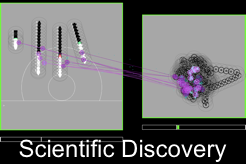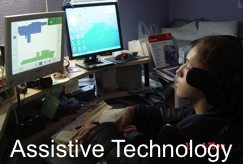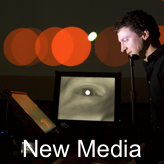


CIS 410/510 Eye Tracking
Methodology and Applications
Spring 2010 — Computer and Information Science
Course Links
Course ScheduleAssignments
Student Photos and Emails
System Documentation
Syllabus
Time and Place
Tuesdays and Thursdays, Noon - 1:20 AM, 200 Deschutes
CRN: 31952 (for 410), 31964 (for 510), 4 Credits
Web Pages: http://www.cs.uoregon.edu/classes/10S/cis410eyetrack/
Instructor
Prof. Anthony Hornof, 356 Deschutes
Office Hours: Tues and Thurs 2 - 3 PM, or by appointment
hornof@cs.uoregon.edu
Overview
Eye tracking is a powerful technology that determines where a person is looking on a computer screen. Eye tracking provides an exciting methodology for studying how people interact with a wide range of visual content, and for creating new ways of interacting with computers. Psychologists use eye tracking to answer fundamental questions about how the mind works. People with severe motor impairments use eye tracking to communicate. A handful of new media artists have even used eye tracking to create eye-controlled interactive music and art. The instructor of this course has conducted research projects in all three of these domains.
The course is open to a broad range of students, including but not limited to computer science, psychology, education, digital art, and music technology. This class will bridge computer science with other disciplines by offering multiple different ways to interact with the same course content through adapted homework assignments. This course will introduce students to the human visual system, eye tracking technology, and eye tracking applications; and provide hands-on experience with running an eye tracking study or creating an eye-controlled application.